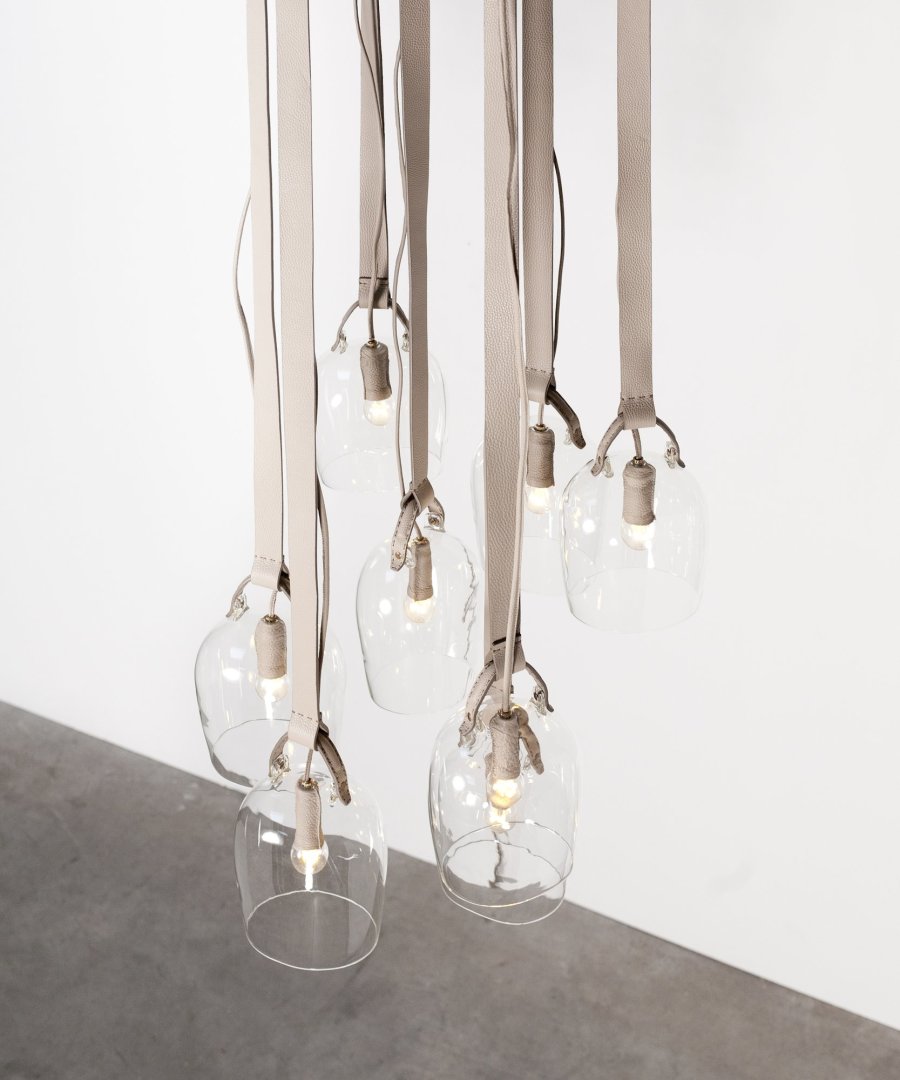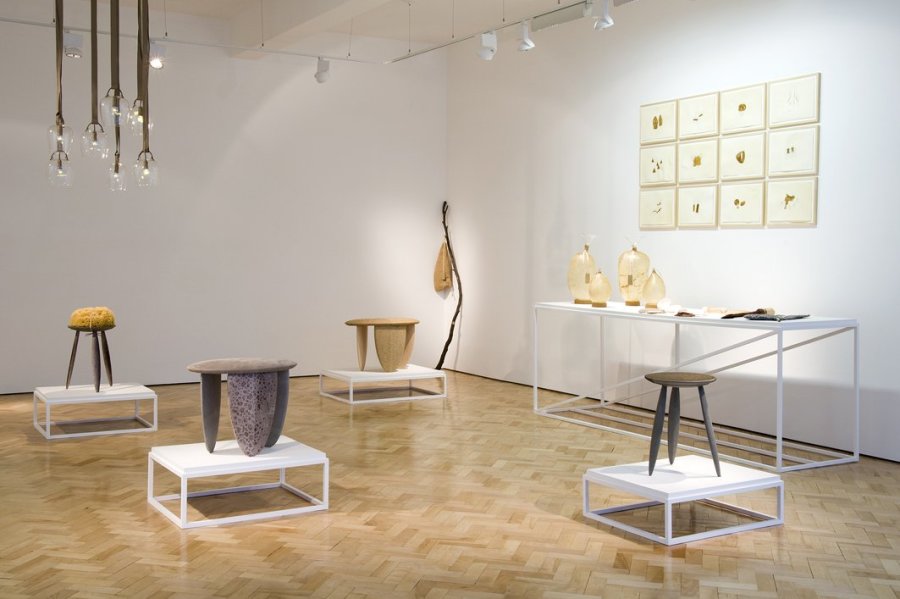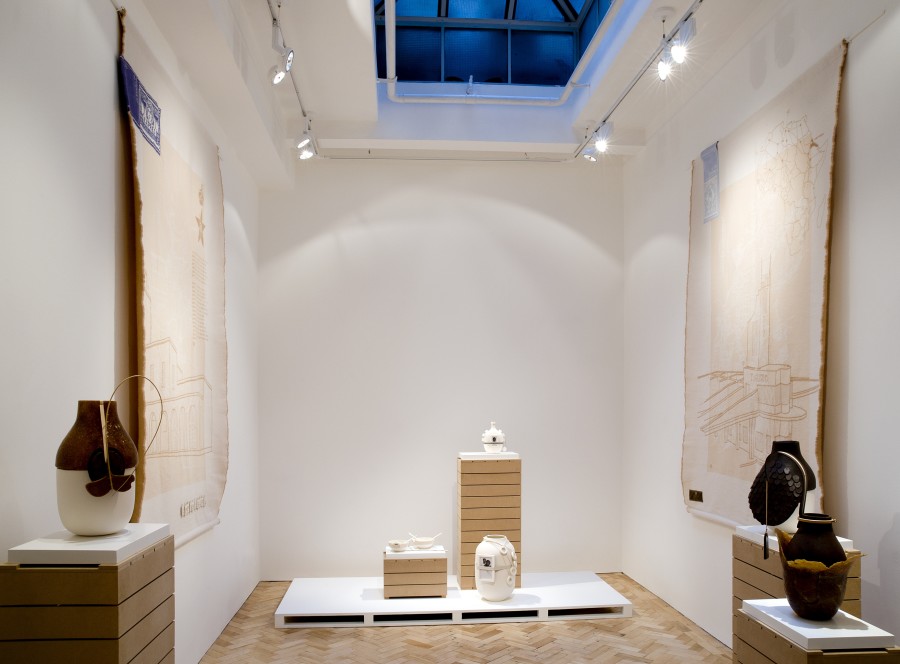Gallery Libby Sellers presented the London-debut of Formafantasma's 'Craftica' series. Initially conceived in collaboration with luxury goods house Fendi for Design Miami/Basel 2012, 'Craftica' is a visual and tactile investigation into the diversity and origins of leather through a collection of handmade stools, lights, vessels and tools.
As Simone Farresin and Andrea Trimarchi, the Italian-born duo behind Formafantasma, have said, "the design is driven by the symbolic connotations of leather, a material that, more than any other, represents the complex relationship between humans and nature. Leather has the ability to evoke almost ancestral memories of when nature was hunted to produce food, tools and protection for the body. Searching underneath and above the sea, from the vegetal to the animal world, the installation offers a holistic view on leather as a material".
In creating the series, Formafantasma merged their own willful primitivism with Fendi's time-honoured craftsmanship and rich material resources. Alongside traditional leathers, the works have been made from vegetal dried fish skins (sourced from a food factory in Iceland), oxidized metal, glass, wood and other natural materials such as bones, shells and cow bladders. The resulting effect is a tactile, pre-industrial and glamorous range that Silvia Fendi has described as "experimentation at its best". To complement their material investigations, Formafantasma invited Francesco Zorzi to create a series of witty illustrations on parchment that show a picaresque history of leather's historical usages.
Formafantasma were listed by Alice Rawsthorn, design critic for the International Herald Tribune, and Paola Antonelli, senior design curator at the Museum of Modern Art in New York, as one of twenty designers who will influence design in the next decade. Their work is in the permanent collections of the Art Institute of Chicago, MUDAC and the Vitra Design Museum. They are represented by Gallery Libby Sellers and all works are available for sale exclusively through the gallery. Their 'Botanica', 'Colony' and 'Moulding Tradition' collections were also exhibited during this period.






